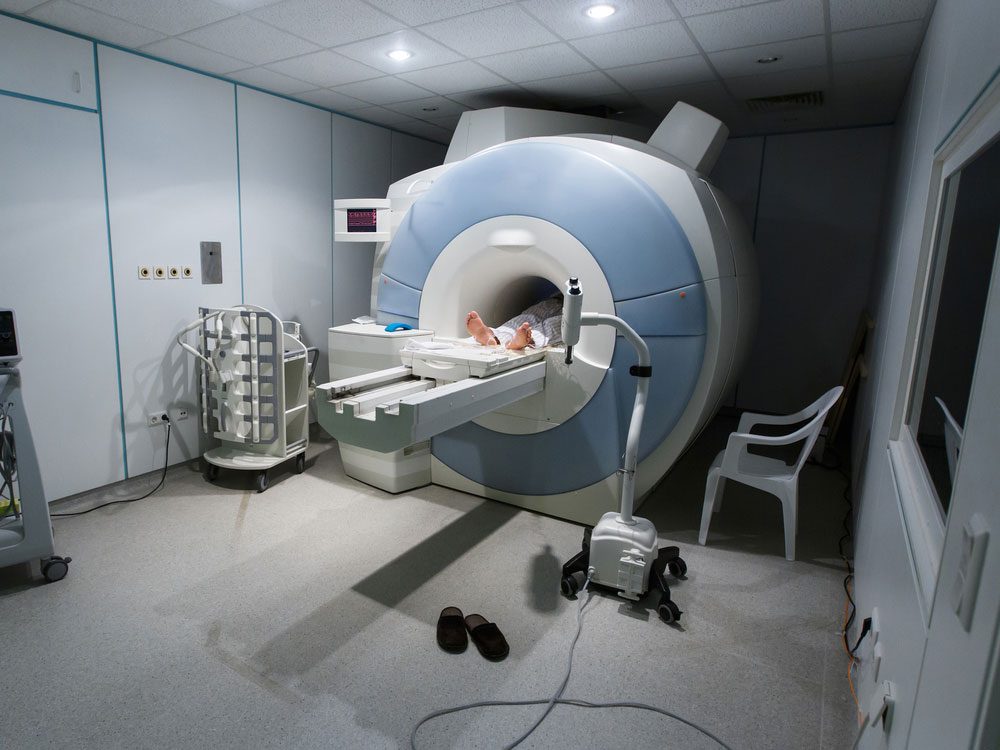
What’s wrong with me?
The patient: Kyle*, 37, runs a home construction company in Austin, Texas
The symptoms: Uncontrollable hand tremors
The doctor: Dr. Howard Eisenberg, chair of Neurosurgery at the University of Maryland Medical Center in Baltimore, Md.
When Kyle was in preschool, he couldn’t colour inside the lines. Later, when his teachers also couldn’t read his handwriting, his parents took him to a doctor. At the time, the boy’s difficulties were attributed to asthma medication, a beta enhancer that increased adrenaline and, his doctor believed, hindered his fine motor skills. Over the next handful of years, every time his parents asked again about the problem, the diagnosis was the same.
But, as Kyle got older, his hand tremors became worse. He couldn’t carry a lunch tray across the cafeteria without it shaking uncontrollably and, if he people were watching him, his tremors became worse. “My hands would shake so much it was hard to get food into my mouth,” Kyle recalls. Eating soup with a spoon was out of the question, as was drinking hot beverages or signing his name in front of someone.
*Biographical details have been changed
Here are 15 medical discoveries you’ll wish you knew sooner.

Kyle’s lifelong symptoms—finally diagnosed!
In high school, Kyle saw two neurologists, both of whom diagnosed him with early onset Parkinson’s disease. But neither Kyle nor his parents were convinced that Parkinson’s was the problem, since he never developed any of the other characteristic symptoms, such as stiffness and slowed movement and speech.
In 1997, when he was 17, he saw a third neurologist, who noticed that Kyle’s tremors completely stopped when his hands were at rest. He was then diagnosed with Essential Tremor (ET), a neurological disorder sometimes confused with Parkinson’s. (Tremors in Parkinson’s patients also occur when they’re not using their hands.)
The recommended treatment was a beta blocker, which Kyle couldn’t take because of his asthma. Another option was a drug designed to reduce epileptic seizures, but Kyle found it affected his ability to focus. In the end, he chose to live with his symptoms. “I got really good at hiding it,” he says. When he started running his own company and had meetings with clients, he’d self-medicate with a quick glass of whisky on the rocks.
The problem, says Dr. Howard Eisenberg at the University of Maryland Medical Center, is that ET is frequently progressive. “It affects the upper extremities most often and it gets increasingly worse—the tremors can spread to the head and legs and also affect the voice.” Although it’s more common than Parkinson’s, Eisenberg says it’s under-reported. “Many patients tolerate it until it alters their lives and they can’t do simple tasks,” he says. Which is how he met Kyle.

A revolutionary treatment
In 2017, Kyle’s mother saw information about a new, non-invasive ultrasound procedure on TV. The technique had only been approved by the FDA for ET in 2016, and then only for one side of the brain. “We’ve performed this on just over 50 patients,” Eisenberg says. “Basically, we’re killing cells in a highly defined location of the brain—we’re not restoring something, we’re rebalancing the system by taking something that wasn’t working away.” Some patients see modest improvement and for others it can be life-changing. In Kyle’s case, it was the latter.
During the two-hour procedure Kyle was rolled in and out of an MRI machine every six minutes—each time he came out, he was asked to perform certain tasks (such as holding a bottle of water) and, every time, his tremor diminished. Eventually, the tremor was gone. “People get pretty emotional, especially if the hand tremors are knocked out completely,” Eisenberg says. “It’s a magical moment for them.”
Just hours after the treatment, Kyle walked out of the hospital and went sightseeing with his family. “I feel like a kid again,” he said two weeks later. “This morning I poured myself a cup of coffee—and there was zero tremor.”
Next, check out the 11 diseases doctors are most likely to miss.